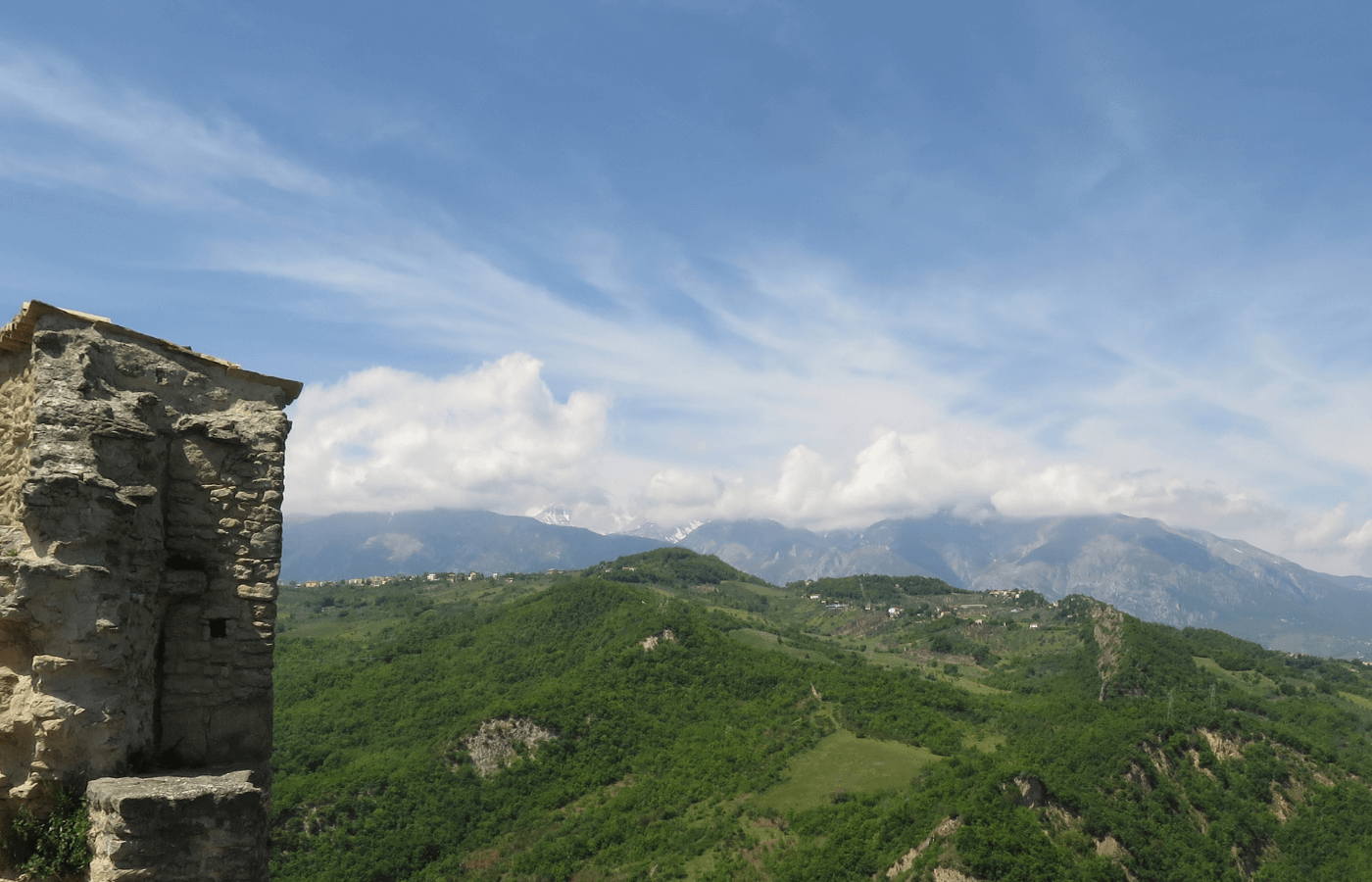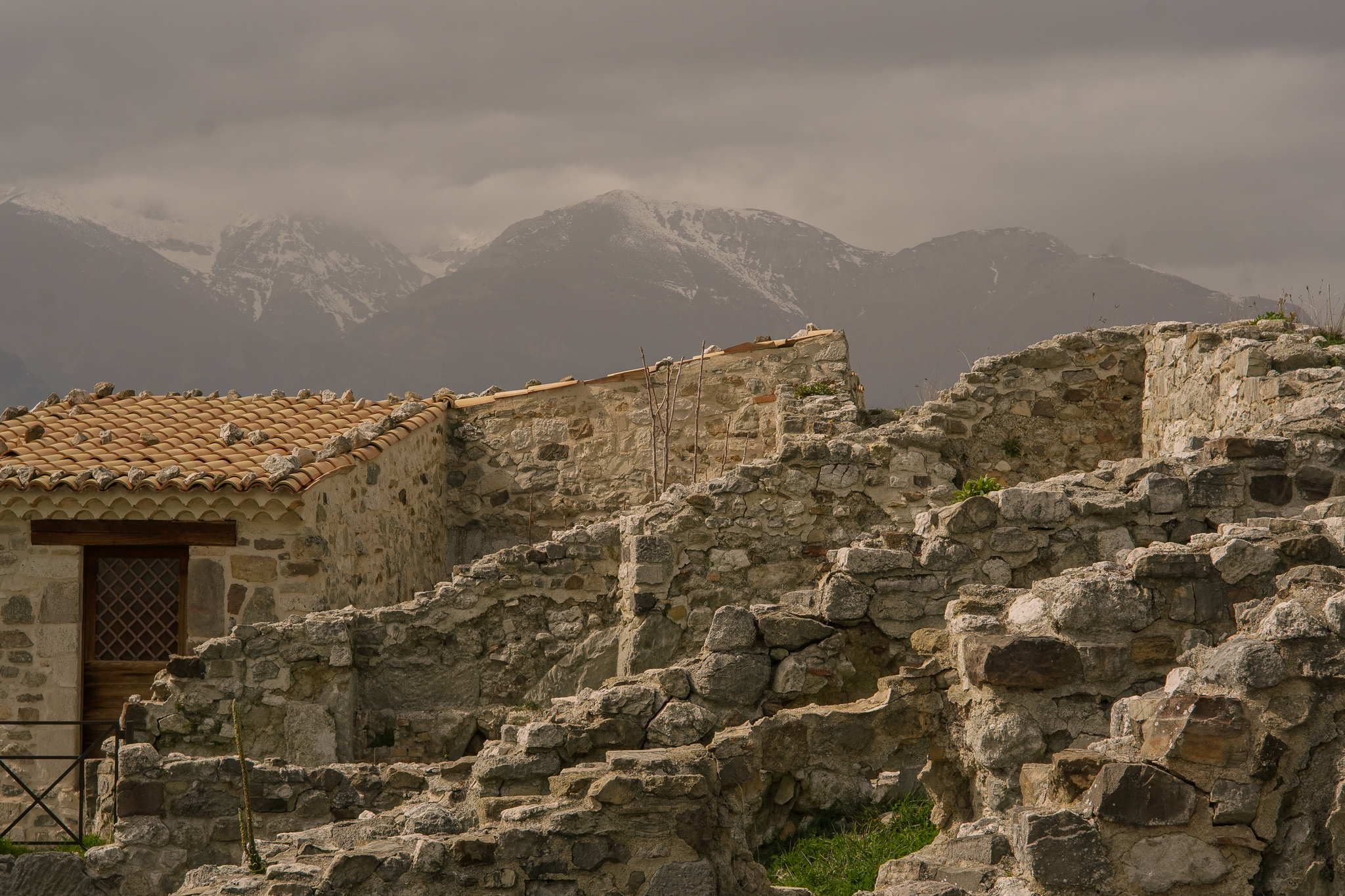Discovering Gessopalena Medieval Village: Abruzzo’s Ghost Town
A journey through shimmering stone ruins, medieval charm, and powerful WWII history in one of Abruzzo’s most evocative and unforgettable ghost towns.
Tucked away in the hills of Chieti province, where the majestic peaks of the Maiella meet rolling countryside, lies one of Abruzzo’s best-kept secrets: the Gessopalena medieval village. Often called the “Little Pompeii of Abruzzo,” this abandoned gem is not only a visual wonder but a journey through time – a place where stone whispers stories, and silence holds echoes of the past.
Whether you’re fascinated by medieval architecture, drawn to quiet ruins, or simply looking for a unique and reflective detour on your road trip through central Italy, the Gessopalena ghost town is a must-visit destination.
Affiliate Disclaimer: Please note that some links on this blog are affiliate links, meaning I may earn a small commission if you make a purchase through them, at no additional cost to you.
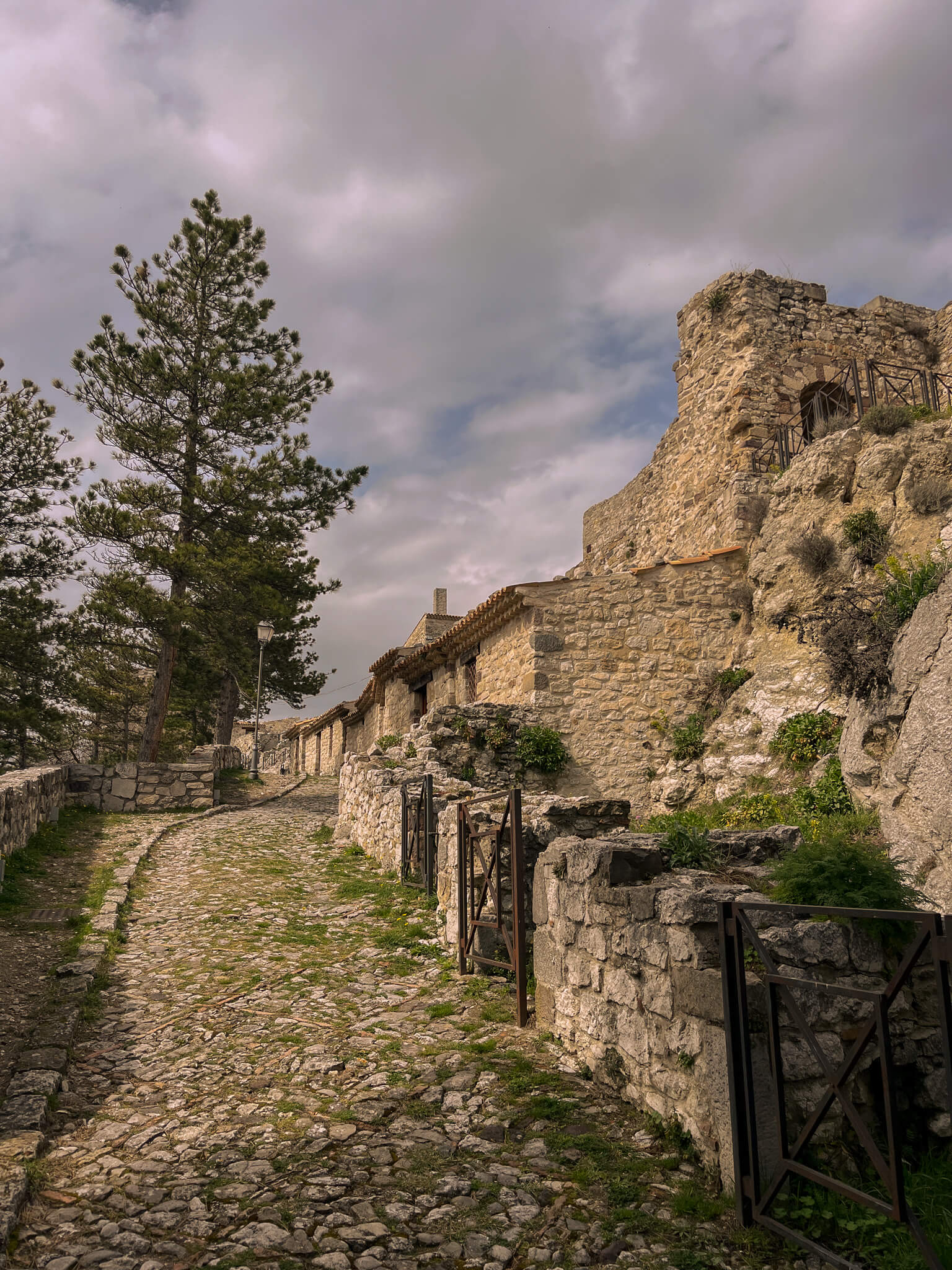
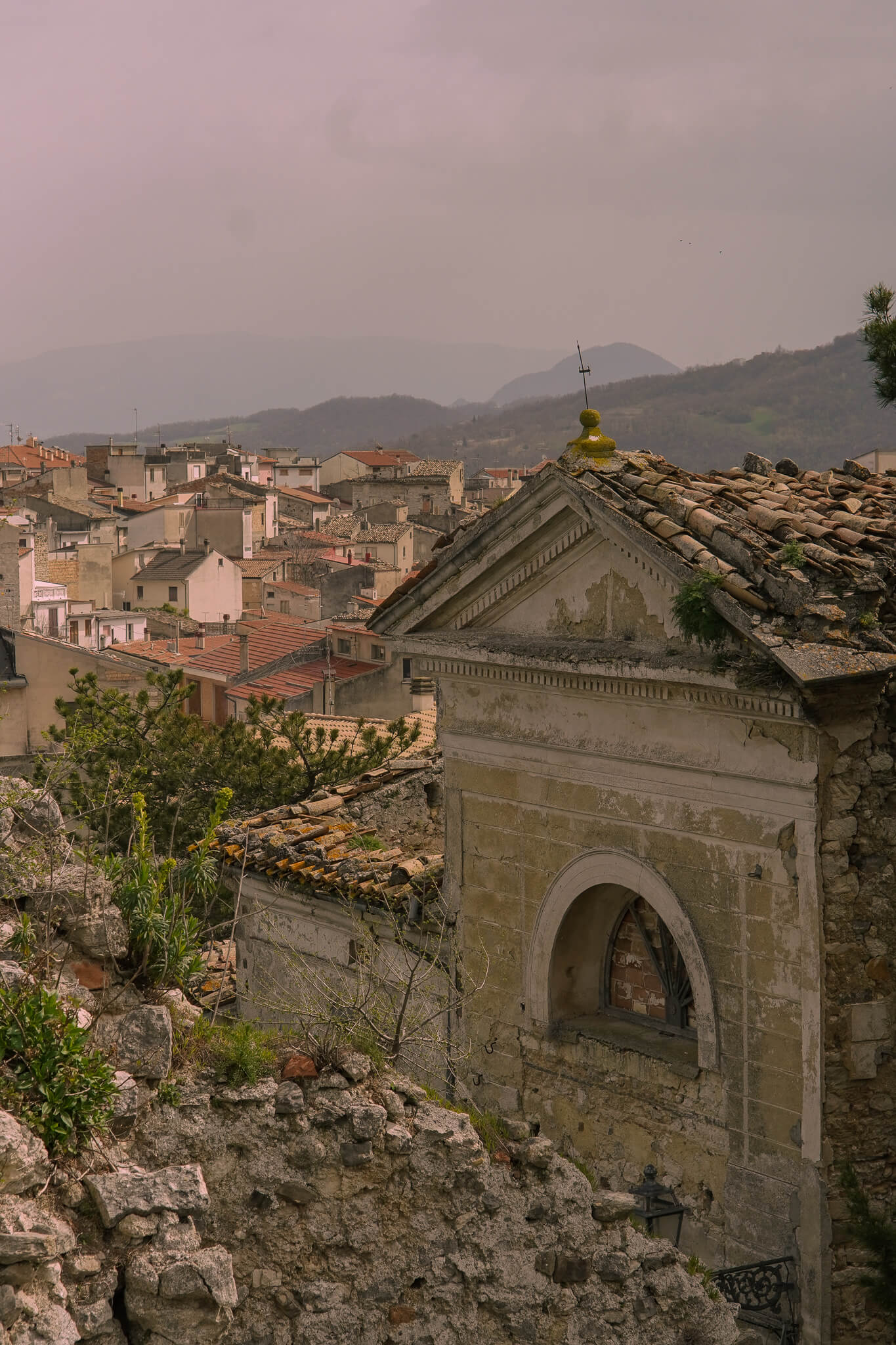
A Brief History of Gessopalena Medieval Village
From Shimmering Stone to Ghost Town
The roots of the Gessopalena medieval village stretch back to around the year 1000, when locals moved to this chalky cliff to build homes carved directly into the rock – an effort to stay safe from invasions and natural dangers.
Over time, a tight-knit community thrived here, largely centered around gypsum mining. In fact, the name Gessopalena comes from “gesso,” or gypsum, which gave rise to its poetic nickname: Preta Lucente, or “Shining Stone.”
These shimmering crystals in the plaster reflect sunlight, bathing the village in a warm, ethereal glow. As you walk its winding paths, it’s easy to see how this light earned the town its endearing moniker.
The Benedictine Legacy
During the Middle Ages, Gessopalena flourished under the influence of the Benedictine monks of Montecassino. Churches and artisan workshops emerged, and much of the structure of the village you see today, from bread ovens to oil mills, dates back to this vibrant period of development.
A Devastating Chapter in WWII
But history took a darker turn in 1943 during the Second World War. Strategically located between coastlines and mountain passes, Gessopalena became a target. After a series of occupations and bombings, the Germans destroyed a large part of the village in December of that year.
The villagers who remained, clinging to their homes or collecting belongings, lost their lives under the rubble. The tragedy left an indelible mark, but also gave rise to one of Abruzzo’s most heroic stories: the formation of the Maiella Brigade, a partisan group instrumental in helping liberate the region. In 2005, Gessopalena was awarded the Gold Medal for Civil Merit for its sacrifices.
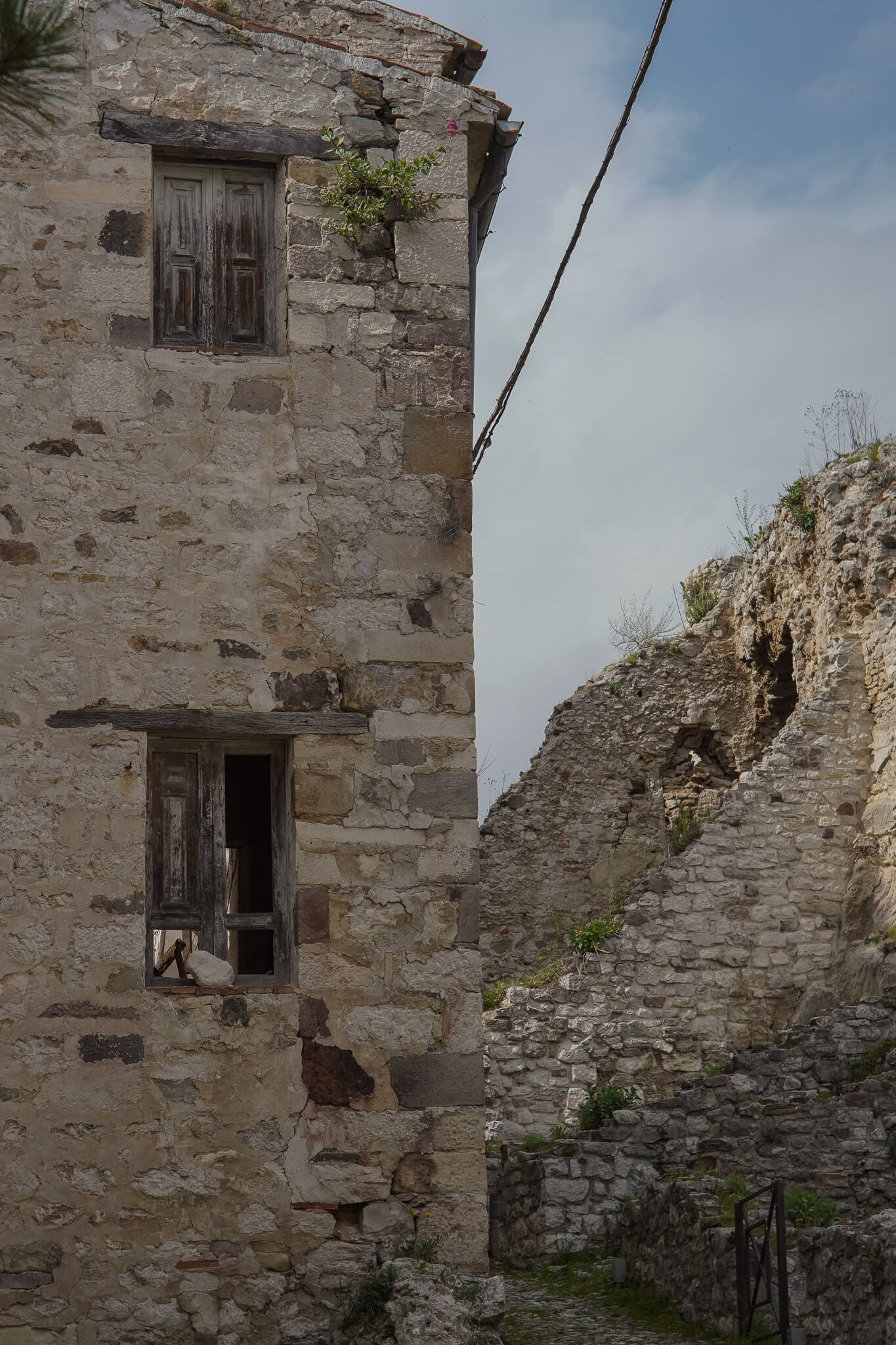
Walking Through Gessopalena Ghost Town: What to Expect
Today, the Gessopalena ghost town is a powerful open-air museum. Much of it has been stabilized for safety, but its ruins have been respectfully left intact – stone homes with hollowed-out windows, weathered staircases, and time-worn archways give visitors a true sense of the life that once buzzed here.
As you stroll along the main road, you’ll pass old stables, communal bread ovens, and even remnants of an oil mill. These details, preserved by time and respect, create a deeply immersive experience.
✨ Insider tip: Take your time here. The beauty of Gessopalena lies in its stillness. Get up for an early morning hike or visit in the late afternoon for the most atmospheric light.
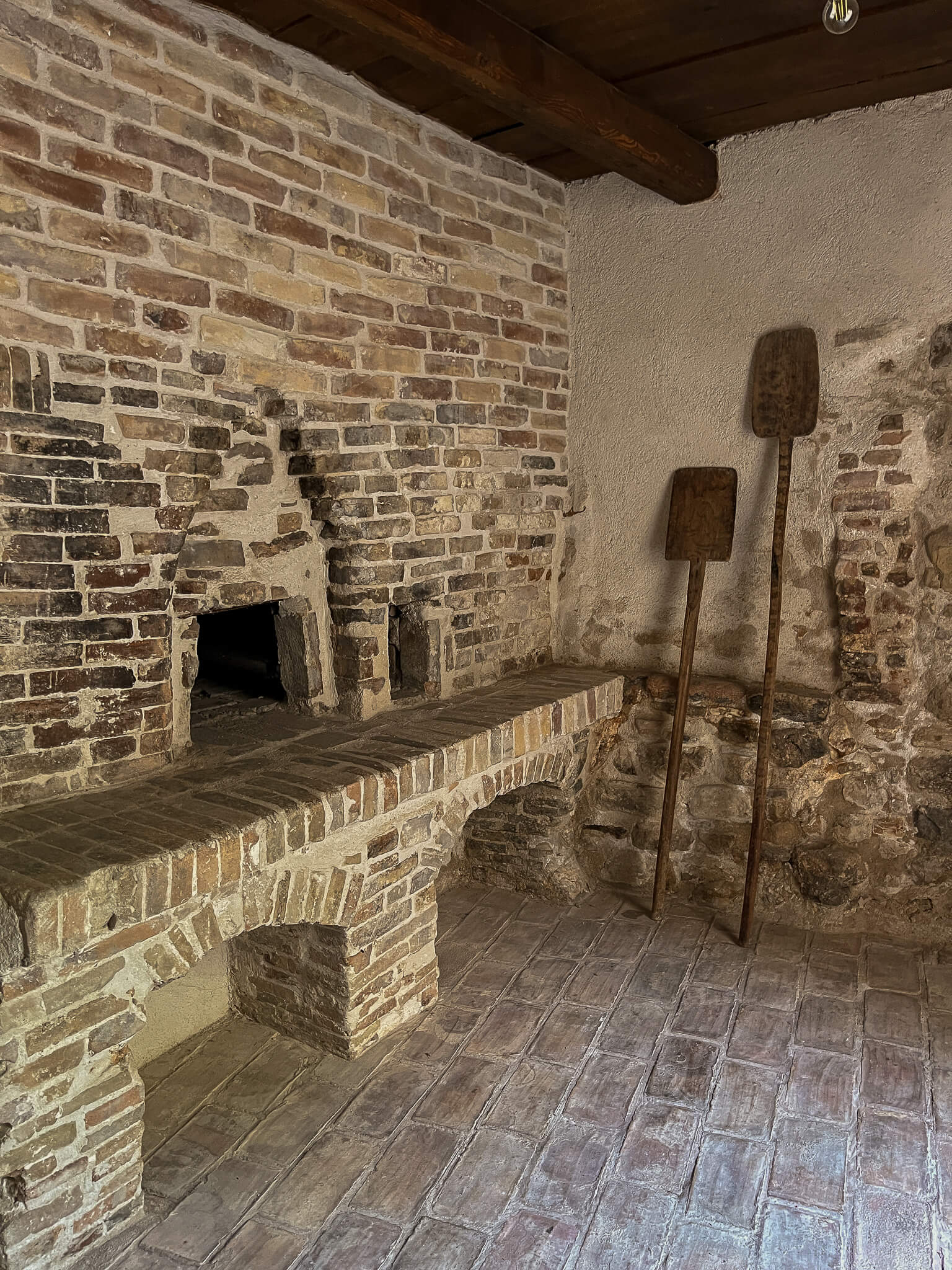
A View You’ll Never Forget
At the very end of the village lies one of its most breathtaking features: a panoramic viewpoint overlooking the valleys and peaks of the Maiella. The view stretches endlessly, offering a peaceful, almost sacred quiet.
It’s a spot so beautiful and romantic, you could easily imagine a wedding taking place here – surrounded by history, nature, and timeless charm.
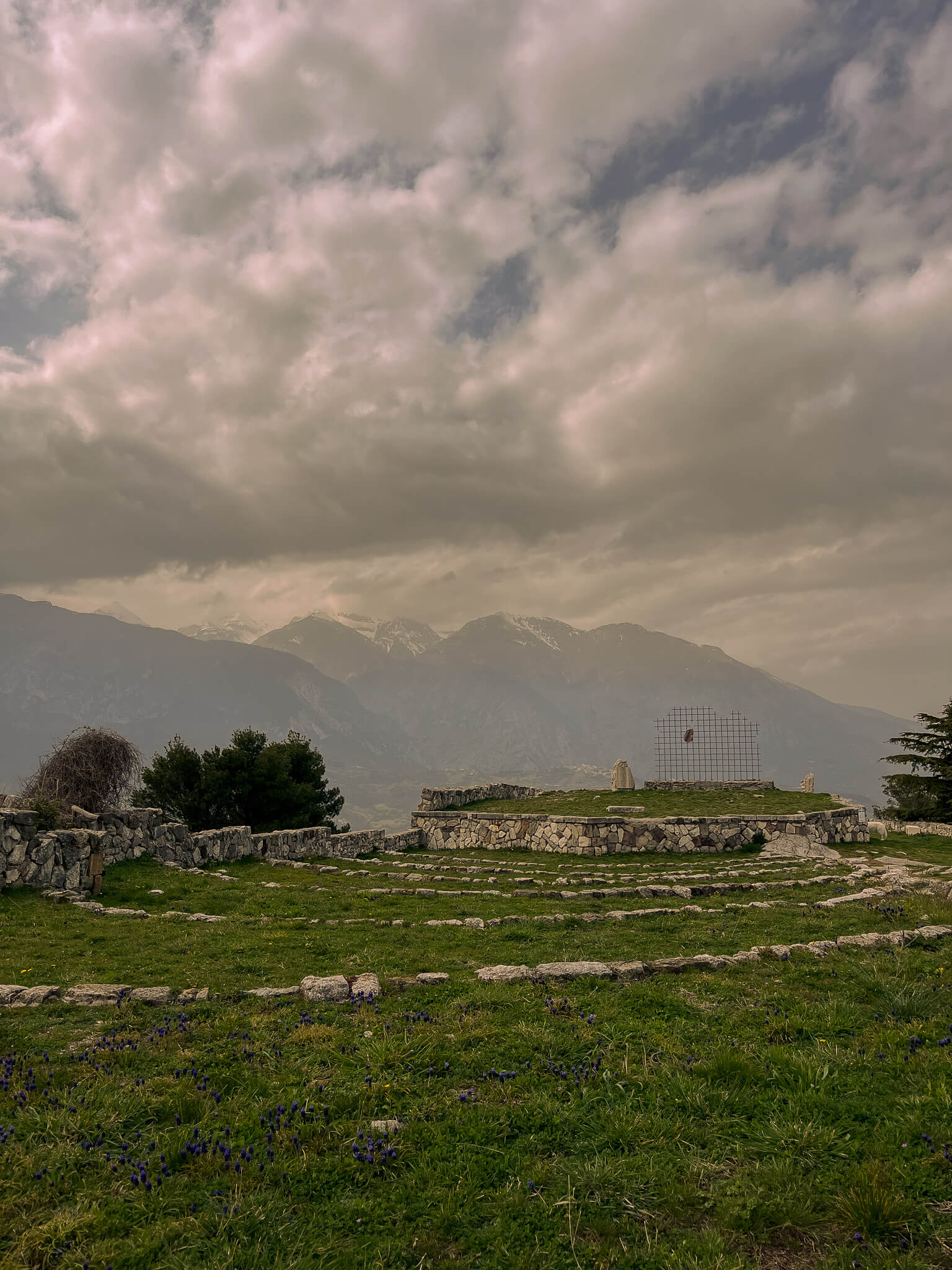
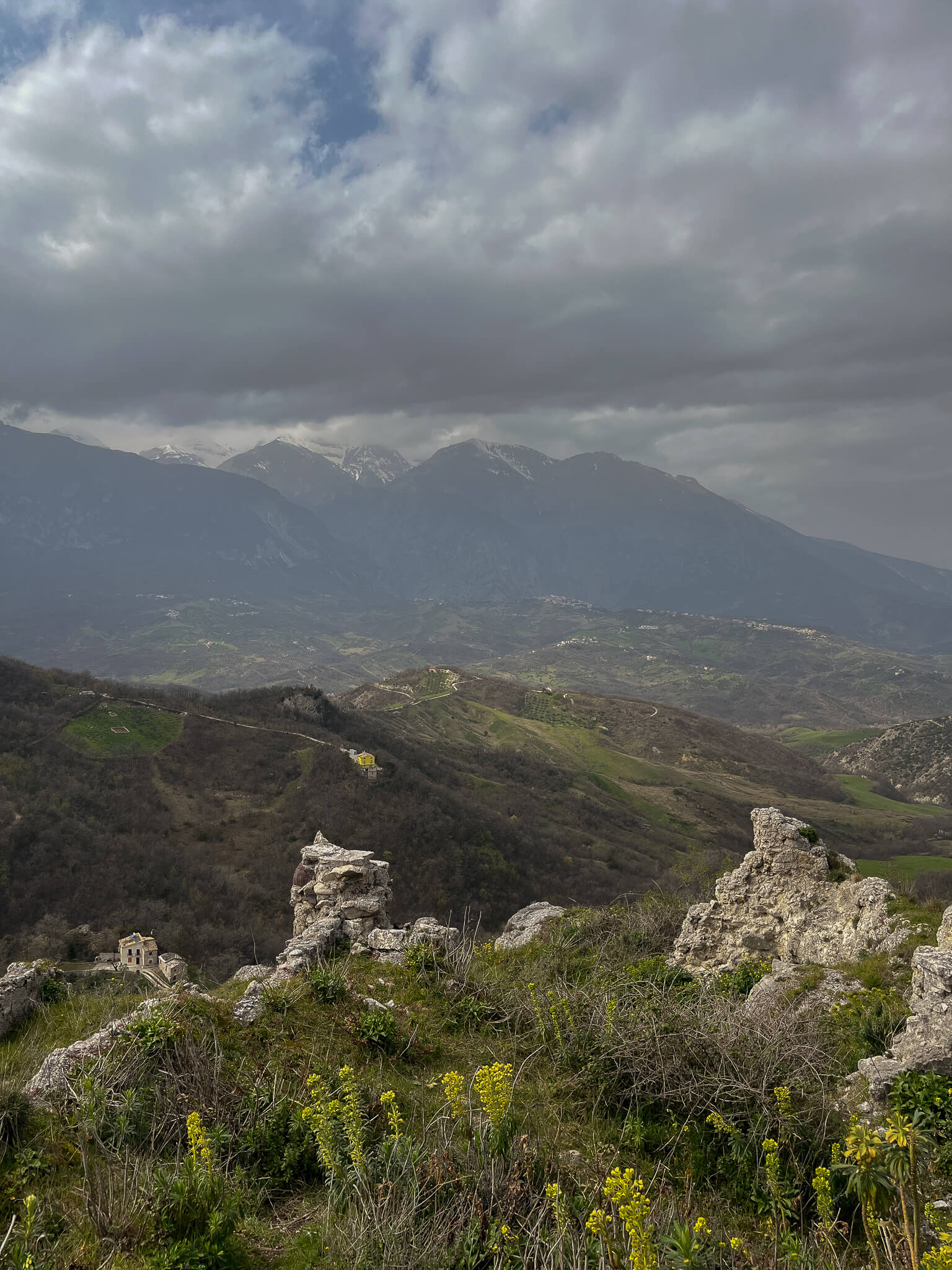
Why You’ll Love Gessopalena Medieval Village
If you’re someone who feels a deep curiosity about the lives lived before us, about places where time seems to pause, then the Gessopalena medieval village is calling your name.
There’s something incredibly moving about walking through a town that no longer bustles with daily life, yet still hums with memory. And while its tragic past is sobering, it’s also what makes the beauty of this place shine brighter.
You don’t just see Gessopalena. You feel it. In the crunch of gravel underfoot, in the breeze that rustles through ancient stone, and in the sunlight that dances off the gypsum walls.
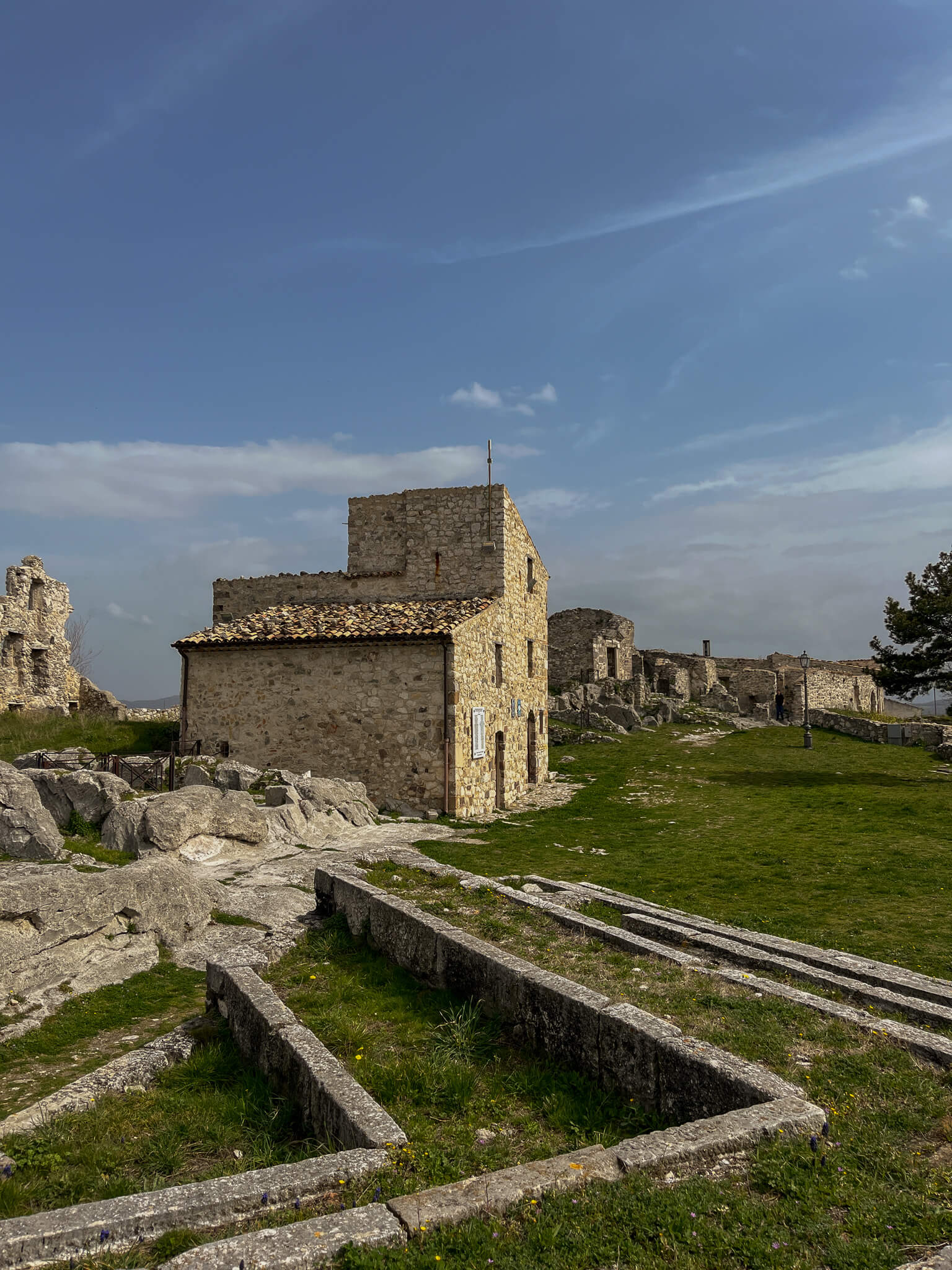
How to Get to the Gessopalena Medieval Village
Reaching Gessopalena medieval village is quite straightforward and absolutely worth the drive.
- 🗺 Location: Gessopalena, Province of Chieti, Abruzzo, Italy
- 🚗 By Car: The most convenient way to reach the ghost town is by car. It’s about 1.5 hours from Pescara or 2.5 hours from Rome. Follow directions to Gessopalena Centro Storico.
- 🚌 Public Transport: Limited, but possible with a combination of regional trains to Casoli or Lanciano and local buses.
- 📍 GPS Tip: Look for signs marked “Gessopalena Vecchia” or “Borgo Medioevale”
✨ Plan Your Visit: Combine a visit to the Gessopalena medieval village with a tour of the Roccascalegna Castle, located just 15 minutes away.
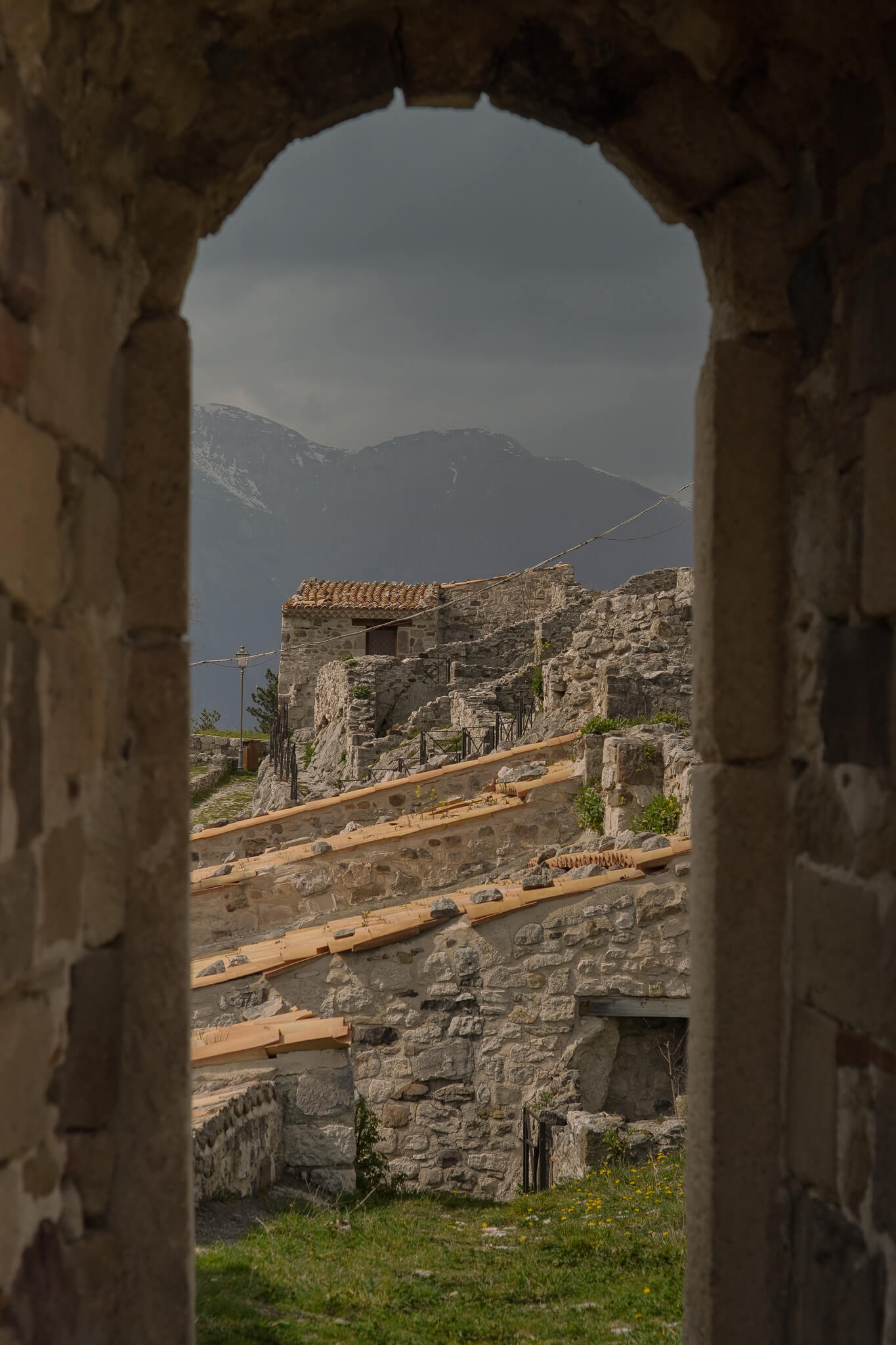
Practical Info for Visiting
- Parking: There is free street parking near the entrance of the village.
- Entrance Fee: Completely free! This is an outdoor museum without an entrance fee.
- Best Time to Visit: Avoid the peak of summer because it can be very hot, with little shade. Spring is perfect as the mountain peaks are still covered in some snow.
- Dog Friendly? Yes, as long as they are on a leash.
- Good for Kids/Families? Yes! Kids can let their imagination run in a magical place like this.
- Wheelchair or Stroller Accessible? You can avoid steps the entire time, but you’ll need “off-road” capable wheels/tires because of the cobblestones.
- Nearby Eateries or Cafes: Stop at Cascina di Mont’Alto, just down the road from Gessopalena.
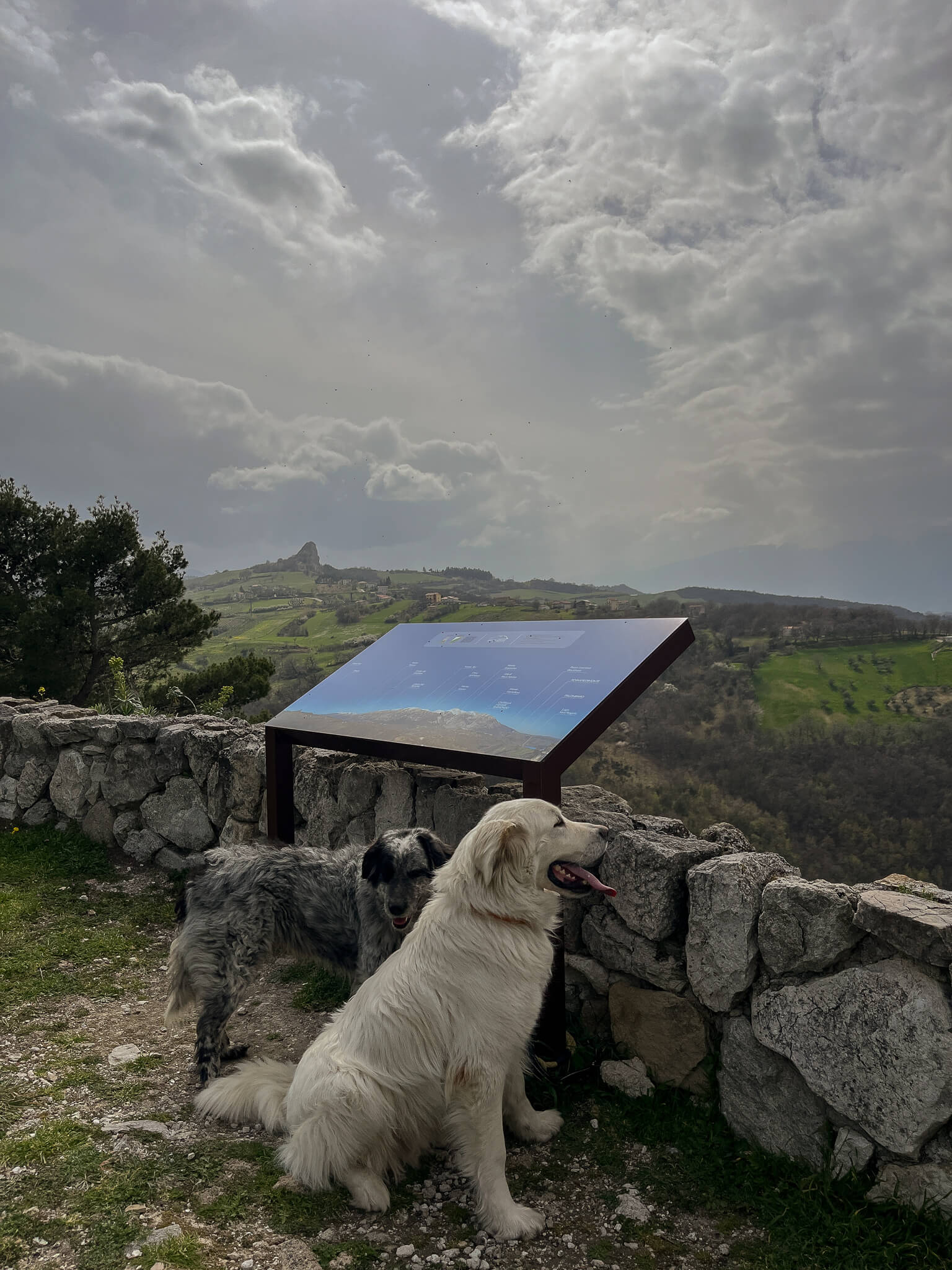
Final Thoughts: A Journey Through Time in Abruzzo
For travelers seeking something off the beaten path, the Gessopalena ghost town is more than a photo op – it’s an experience. A walk through this medieval village offers a rare chance to connect with history, nature, and a deep sense of place.
Add it to your Abruzzo itinerary, bring your camera, and take your time. This shining stone village won’t disappoint.
